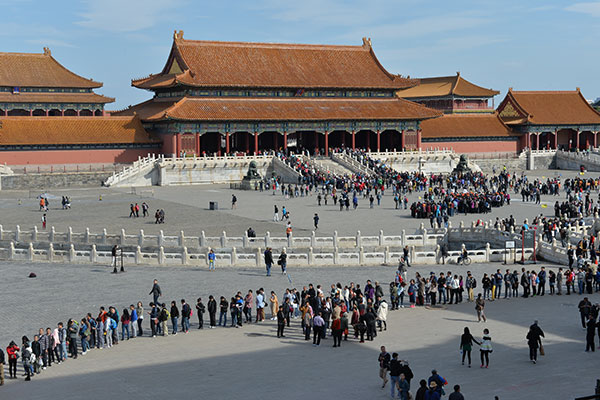
Like all things natural, cultural events and trends do not happen in a vacuum or a prearranged manner neatly framed by a calendar. A rundown of 2015’s most significant, as selected by our editors and reporters, represents our efforts to capture what is essentially amorphous in a continuum. As such, they tend to have impact beyond a single field or time frame and, as a whole, may help define a society with evolving tastes and pursuits. Whatever one may glean from these soft tissues of our society, they animate our era with a dynamism uniquely our own.
1. Special show marks Palace Museum’s 90th anniversary
When people wait in lines after midnight only to see a long-hibernating scroll painting, it is more than an exhibition. It is a once-in-a-lifetime cultural excursion for many visitors.
The Palace Museum in Beijing, also known as the Forbidden City, opened its two-month special exhibition titled The Precious Collection of the Stone Moat, which included 283 of the finest ancient paintings and calligraphy works from the former royal collections.
Along the River During the Qingming Festival, generally considered to be the most well-known ancient Chinese painting, was completely unrolled for the first time since 2005, and is the reason why people were so excited.
The work by Zhang Zeduan (1085-1145), which is 24.8 centimeters wide and 5.29 meters long, depicts a flourishing landscape in Bianjing, the capital of the Northern Song Dynasty (960-1127).
The eye-catching display was the main event marking the 90th anniversary of the opening of the Forbidden City, China’s former royal palace, to the public as a museum.
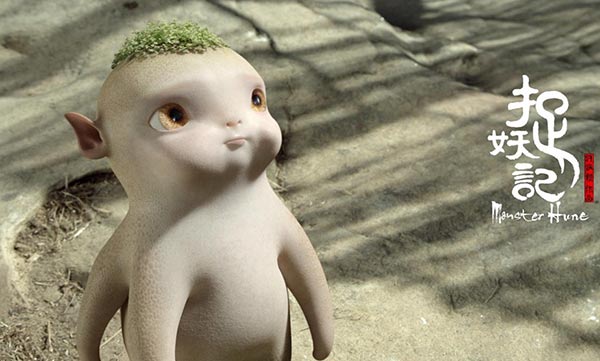
2. Hot tickets
It does not really matter whether the annual box-office total reaches 45 billion yuan ($7 billion) this year. (Last year it was a tad short of the magical 30 billion.)
What is beyond doubt is that China’s film market is on a roll. Records are being smashed on a monthly basis. Monster Hunt, a domestic family-oriented fantasy flick, has taken the lead for the time being and comedies still dominate the domestic film industry that holds Hollywood juggernauts at bay in the mainland market.
Meanwhile, the real Goliaths have turned out to be a quartet that has excelled in high technology and related businesses. Wanda, Baidu, Alibaba and Tencent, with their long-reaching tentacles, have enveloped traditional film production into their more unconventional empires. A negative corollary, as seen by most traditionalists, is the blind hype of so-called hot IPs, usually online fiction with a proven audience. It remains to be seen whether big money is a Trojan horse or a blessing in disguise for filmmaking.

3. We media boom
The number of accounts opened on China’s biggest messaging-service platform, WeChat, hit a peak in 2015 with daily visits going into the millions. Popular “we media” on WeChat are usually run by former reporters or editors who have left newspapers and magazines.
They provide videos or news items on star gossip, film, fashion trends, food and wines and finance. As long as it generates user-friendly content, it’s not difficult for a “we media” account to attract more than 1 million fans within a year. WeChat has about 549 million users now. Most of these “we media” accounts quickly become profitable. A single endorsement by an account could earn up to 100,000 yuan.
The great popularity of “we media” accounts is also attracting a lot of investment from owners. Some of them have even hired teams to run the accounts. But as more media professionals and celebrities jump on the bandwagon there are concerns about this trend in a multimedia era where users have numerous choices.
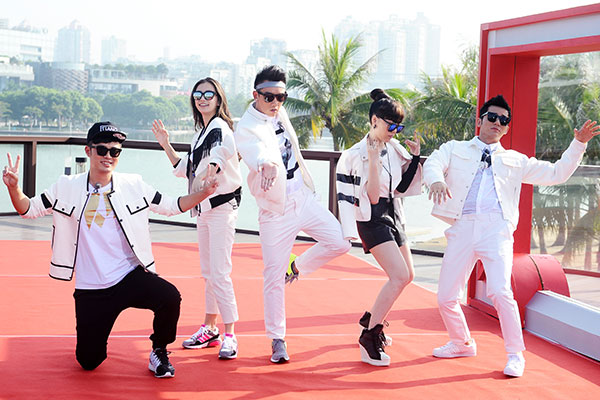
4. Reality show booms
China’s variety shows, especially those whose stars are “tortured” verbally or physically, are very popular with small screen viewers.
Running Man, a large-scale outdoor-sports reality show that originated in South Korea, is hosted by seven stars who have a great sense of humor and tons of physical strength. With its peak rating of 5 percent-when even the most popular TV dramas struggle to cross 3-the show was adapted into a feature-length movie, which grossed an astonishing 439 million yuan.
The talk shows Jin Xing Time and U Can U Bibi, both hosted by China’s transgendered artist Jin Xing, were huge sensations online for their showbiz satires and sharp commentary on social issues.
China’s enthusiasm for reality shows has also attracted the attention of Europe. British explorer Bear Grylls cooperated for the first time with the Chinese to make a local adventure show, Survival Games, a 12-episode program. The show topped the topic charts on Weibo, China’s answer to Twitter, for its controversial scenes featuring stars eating things like ox eyes and earthworms.
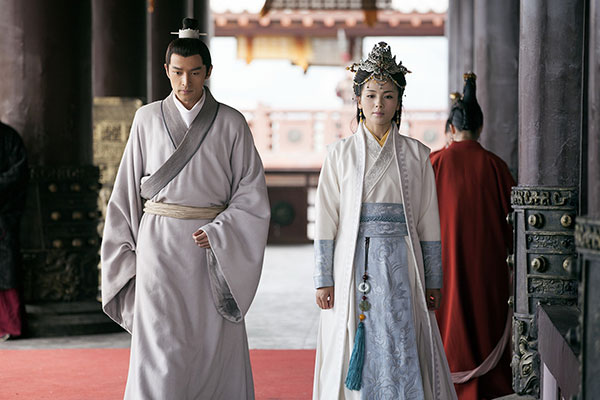
5. Hit TV series
If you ask TV fans about the most impressive series of the year, the answer is most likely to be Nirvana in Fire.
Set in a fictionalized dynasty around 1,600 years ago, the 54-episode drama narrates a Chinese version of The Count of Monte Cristo. The protagonist, Mei Changsu, the only son of a framed general, risks his life to clear the name of his father and 70,000 military personnel wrongly executed for treason.
Its exquisite sets, nervous rhythm and lead roles won top ratings across the Chinese mainland. A month after its premiere, it received around 6 billion clicks on video-streaming sites. Fans made numerous spinoffs, including framing middle school exam questions on the series and reworking stills, to show their adoration.
Overseas popularity followed. Alongside its later September release in North America, the series made waves in Asian markets such as South Korea and Japan. A release in Africa is in the pipeline.
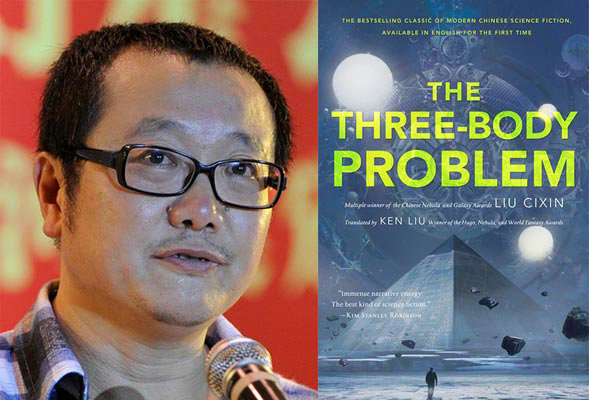
6. Liu Cixin and China’s sci-fi
In August, China’s science fiction writer Liu Cixin won the Hugo Award for his novel, The Three-Body Problem, becoming the first Asian writer to win this top sci-fi writing award.
After Mo Yan, who won the Nobel Prize for Literature in 2012, Liu’s achievement has made waves in China. Liu was praised as the writer who had raised China’s sci-fi writing to the world-class standards. Sci-fi has become one of the hottest words in China in 2015. It has been talked about at various events and even by the government.
However, industry sources including Liu are not overly excited. After the award, except for Liu’s Three-Body trilogy, there has been no obvious improvement in the sales of domestic sci-fi literature.
Without the market sentiment picking up, it is hard for the industry to really grow, not to mention the overall low quality of sci-fi writing, the small number of readers, the shortage of writers and the declining publishing industry, all of which form a vicious circle.
It is yet to be seen how China’s sci-fi writing will develop in 2016-either the wave will fade or another major award will breathe new life.
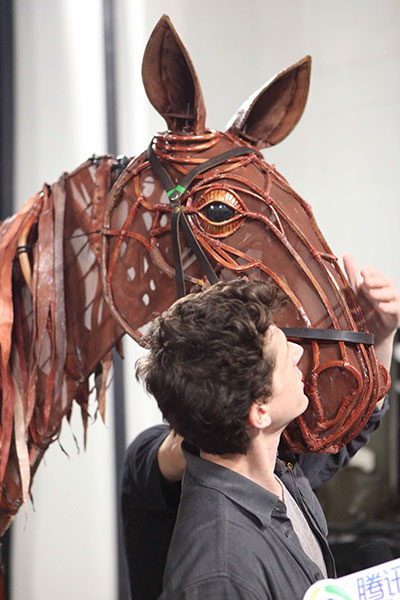
7. Theater production
The National Theater of China bought the copyright of the play War Horse from the National Theatre of Great Britain to produce a Chinese version of the play. The Chinese production ran for about two months in Beijing, and is now running in Shanghai through Jan 17. It will tour Guangzhou from March 8 to May 3.
The biggest challenge in the play is coming to grips with the horse puppet.
It takes three actors to manipulate the 2.4-meter-high horse, weighing 54 kilograms.
The Chinese version of the play is the fourth-language edition of the work, which has been staged in English, German and Dutch.
As the puppet is created by the Handspring Puppet Company of South Africa, Chinese and African actors performed the play for China’s President Xi Jinping and dozens of African leaders in Johannesburg when they were in South Africa in December.
Besides War Horse, the National Theatre of Britain also brought its NT Live broadcasting program to China as part of the 2015 UK-China Year of Cultural Exchange. A total of 10 shows were staged in Beijing and Shanghai, including Of Mice and Men, Coriolanus, Frankenstein, Skylight and The Audience.
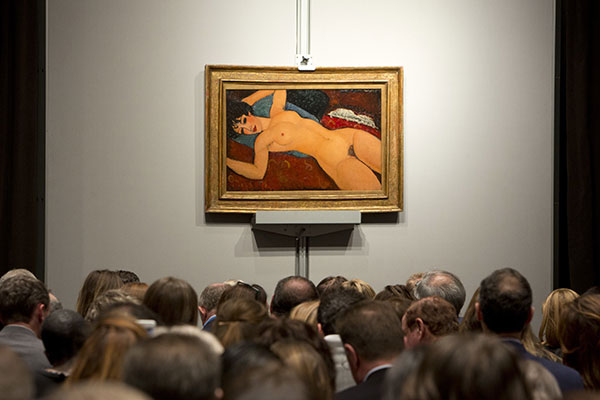
8. Auctions
Generally the art market is pausing. The salerooms have seen fewer bidders looking for short-term benefits but more rational buyers who accept reasonable, moderate prices.
Auction houses are segmenting what they offer to cater to the diversified need of a growing base of middle-class buyers.
While an economic slowdown over the past year has made a lot of Chinese art buyers rather hesitant, Liu Yiqian, 52, remains bold and decisive when spending at auctions.
The self-made Shanghai billionaire and collector shelled out $170.4 million on Italian artist Amedeo Modigliani’s Reclining Nude at a Christie’s sale in New York on Nov 9. The price is the second-highest paid for an artwork at auction.
The extravagant purchase thrust Liu into the media spotlight amid heated debate. Some people sees his purchase as a boost to national pride, hailing a Chinese buyer’s confidence to buy a Western masterpiece, while others say it’s just another example of Chinese collectors’ recent spending on Western artworks by paying inflated prices.
Liu’s lavish spending has won him the sobriquet ren xing ge (the rich guy who buys whatever he wants).

9. Han tomb
Marquis Haihun, a dethroned monarch who wallowed in obscurity for 2,000 years after he was buried with his lost city, is now in the limelight since gold artifacts were retrieved from his tomb in Nanchang, the capital of Jiangxi province.
You can imagine how significant this find is as China’s major news websites have been following this story faithfully for more than a month.
It is one of China’s most important archaeological discoveries in recent years, and field work is ongoing.
More than 10,000 cultural relics have been found so far, and many of the finds have the potential to rewrite Chinese history.
Marquis Haihun is the title which was given to Liu He (92-59 BC). His reign lasted for only 27 days, the shortest among Western Han Dynasty (206 BC to AD 24) monarchs. He lost his throne because of his debauchery and licentious lifestyle. But he was allowed to reside near Boyang Lake and the title of marquis remained with his family for three generations.
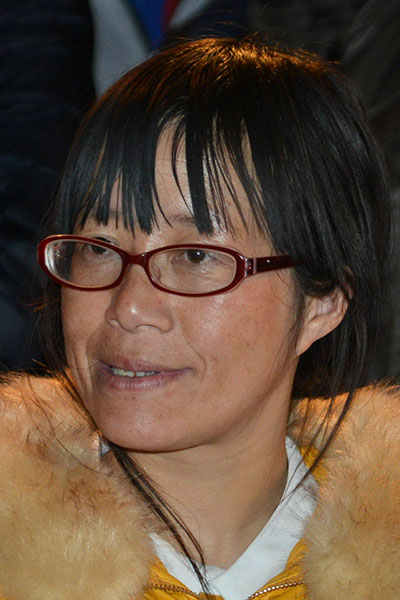
10. Poetic license
We seem to be a thousand years away from the height of Chinese poetry, when Li Bai, Du Fu and Bai Juyi reigned supreme. But we get occasional bursts of poetic creativity.
Yu Xiuhua caught public attention initially by her mismatch with our perception of a poet: She is a farmer without much education; she has cerebral palsy, which impairs her speech and movement; she does not belong to any literary circle, formal or otherwise. Yet her poems have such originality and poignancy that she became an overnight sensation of social media. Some call her “China’s Emily Dickinson”.
Feng Tang was already a celebrity when he set his eyes on Tagore’s collection of poetry. As a matter of fact, he was not satisfied with the Indian Nobel laureate’s English original and took it upon himself to “improve” it. The result is a new translation of Stray Birds that is more Feng than Tagore, complete with sexually suggestive terms, odd word choices and line separations. Public outcry ensued, pressuring the publisher to pull the book from the shelves.
As poetry, the purest form of literature, recedes into oblivion, we need these headlines to keep it from total irrelevance.
